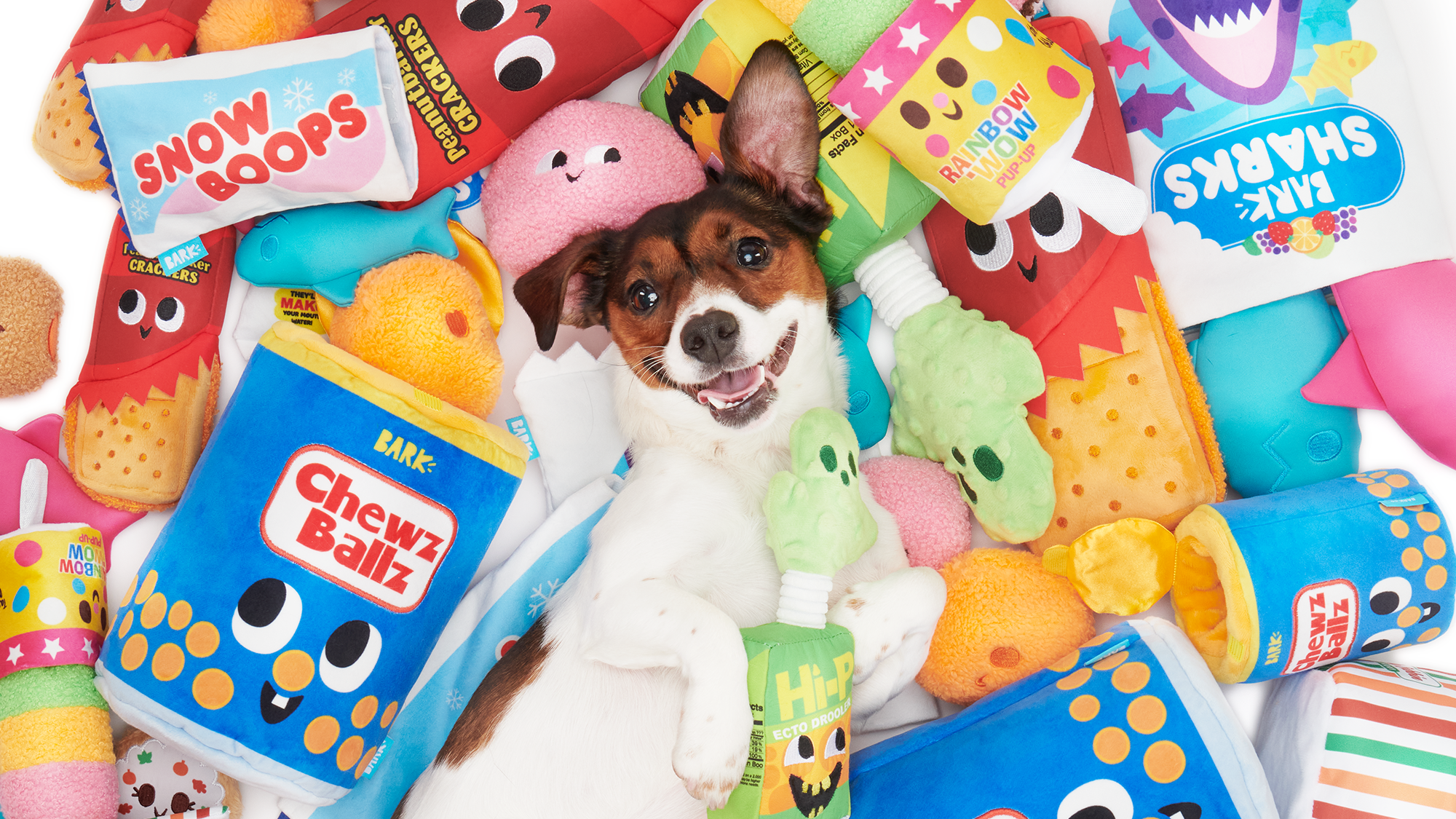Best kitten food of 2025: Our 6 top picks to help your young feline thrive
Looking for the best kitten food? Here's what we recommend based on nutrition, digestibility, and price
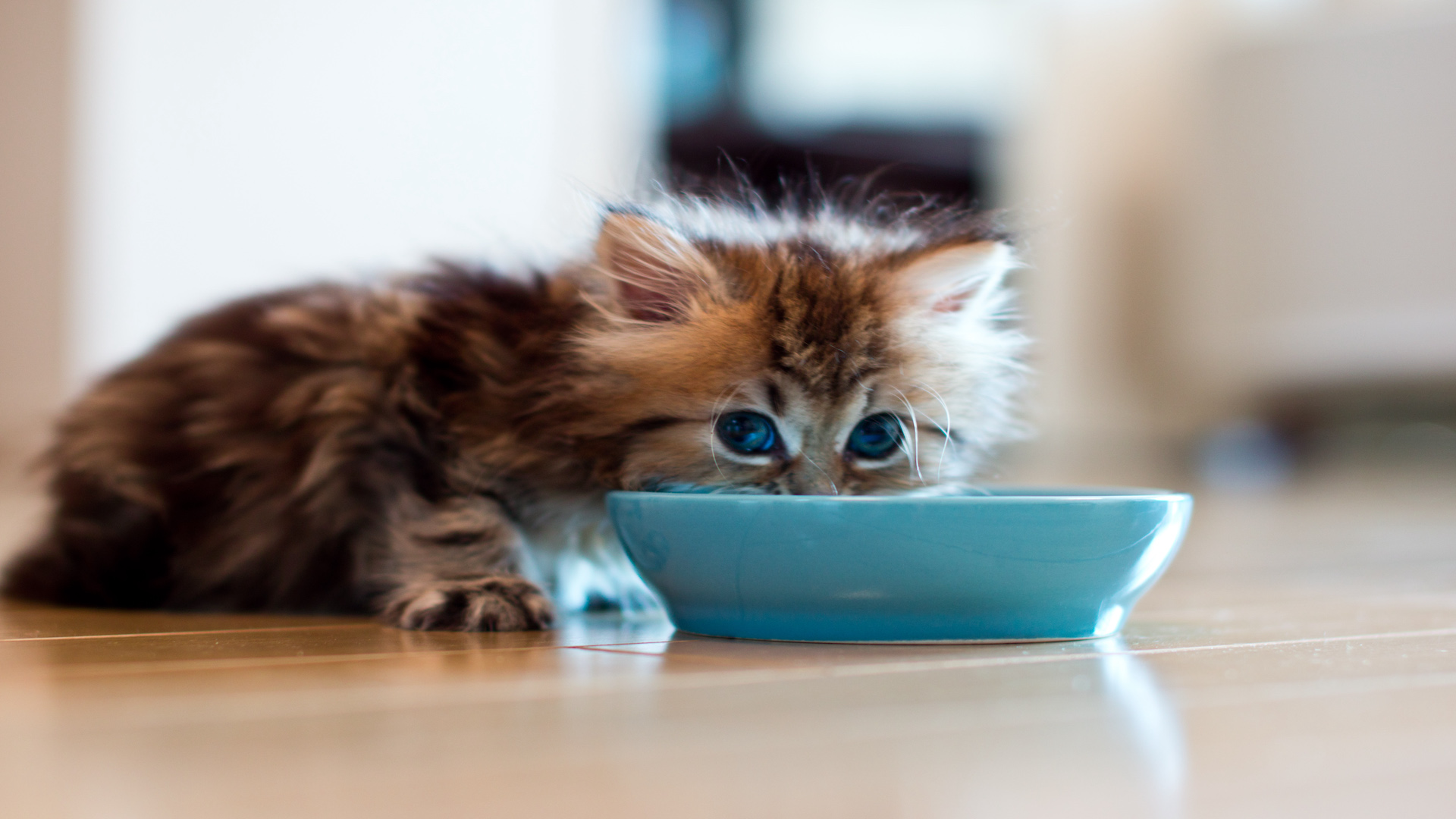
- Quick list
- 1. Best dry kitten food
- 2. Best wet kitten food
- 3. Best budget-friendly wet kitten food
- 4. Best raw friendly food
- 5. Best budget-friendly dry kitten food
- 6. Best premium dry kitten food
- How we test
- How to choose
- Important nutrients
- Dry vs. wet food
- How often to feed a kitten
- Free-feeding vs. scheduled feeding
If you've recently brought home a new bundle of fluff, you're probably on the hunt for the best kitten food to give them a good start in life. During their first year, your fur baby experiences rapid growth and needs the right amount of nutrients to help them develop to their full potential.
In fact, your kitten will need three times as many calories as an adult cat, so it's crucial to provide them with a menu that's appropriate for their life stage, rather than standard adult food. Kittens also have higher requirements for proteins and fats, which is another thing to keep in mind.
While it's not essential and should be fed sparingly, you might also want to incorporate the best kitten treats into their diet, as they can be super helpful when it comes to training.
To help you make the best choice possible, we've rounded up six foods that will keep your kitten healthy and ensure they meet their daily needs. Before adding anything to this guide, I consulted four qualified vets to review the ingredients, so that every option is expert-approved.
Here are the best kitten foods of 2025:
The quick list
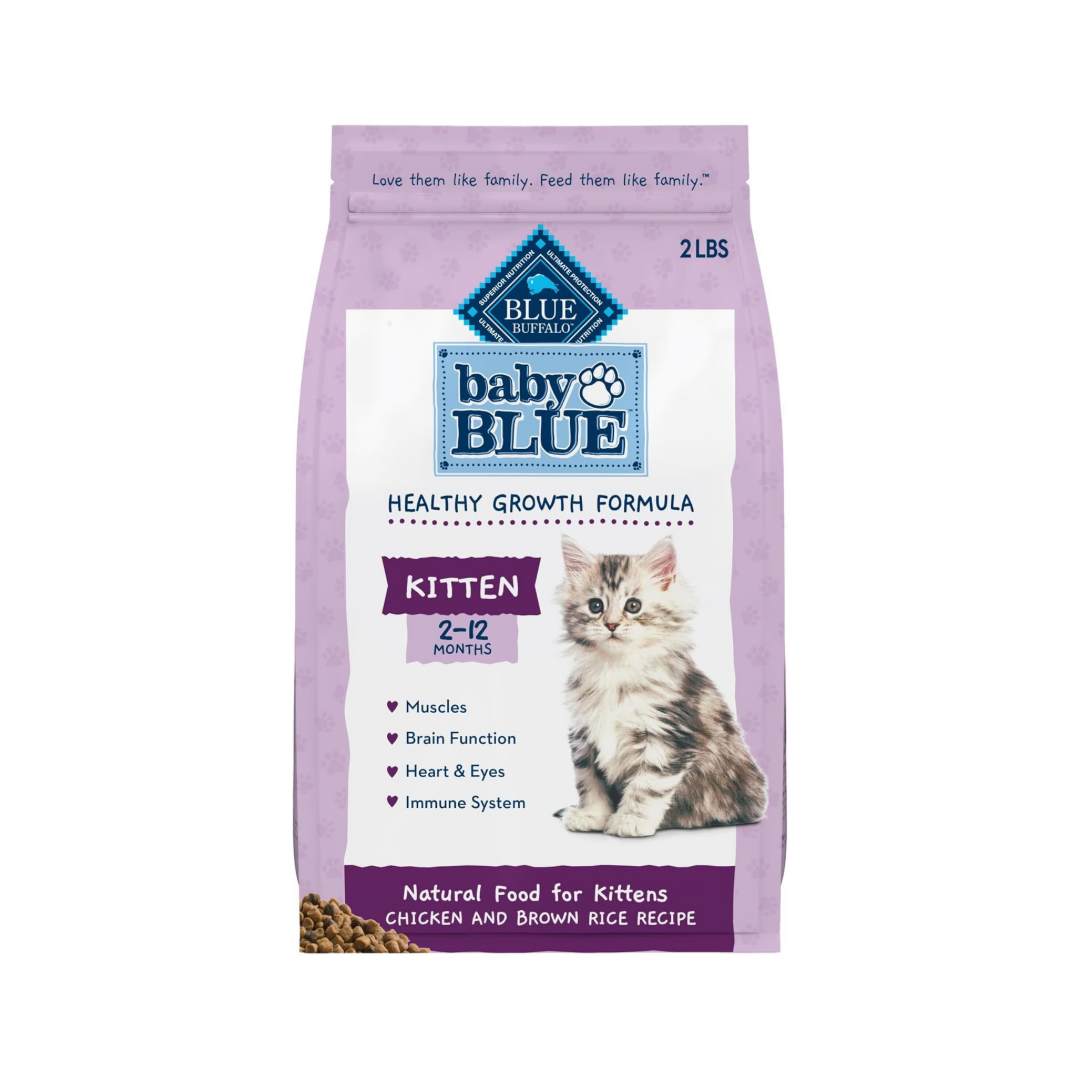
The best dry kitten food
A complete and nutritious formula that supports your kitten's growth and development, featuring high levels of protein and essential fatty acids. It's free from corn, wheat, soy, by-product meals, and artificial flavors and preservatives.
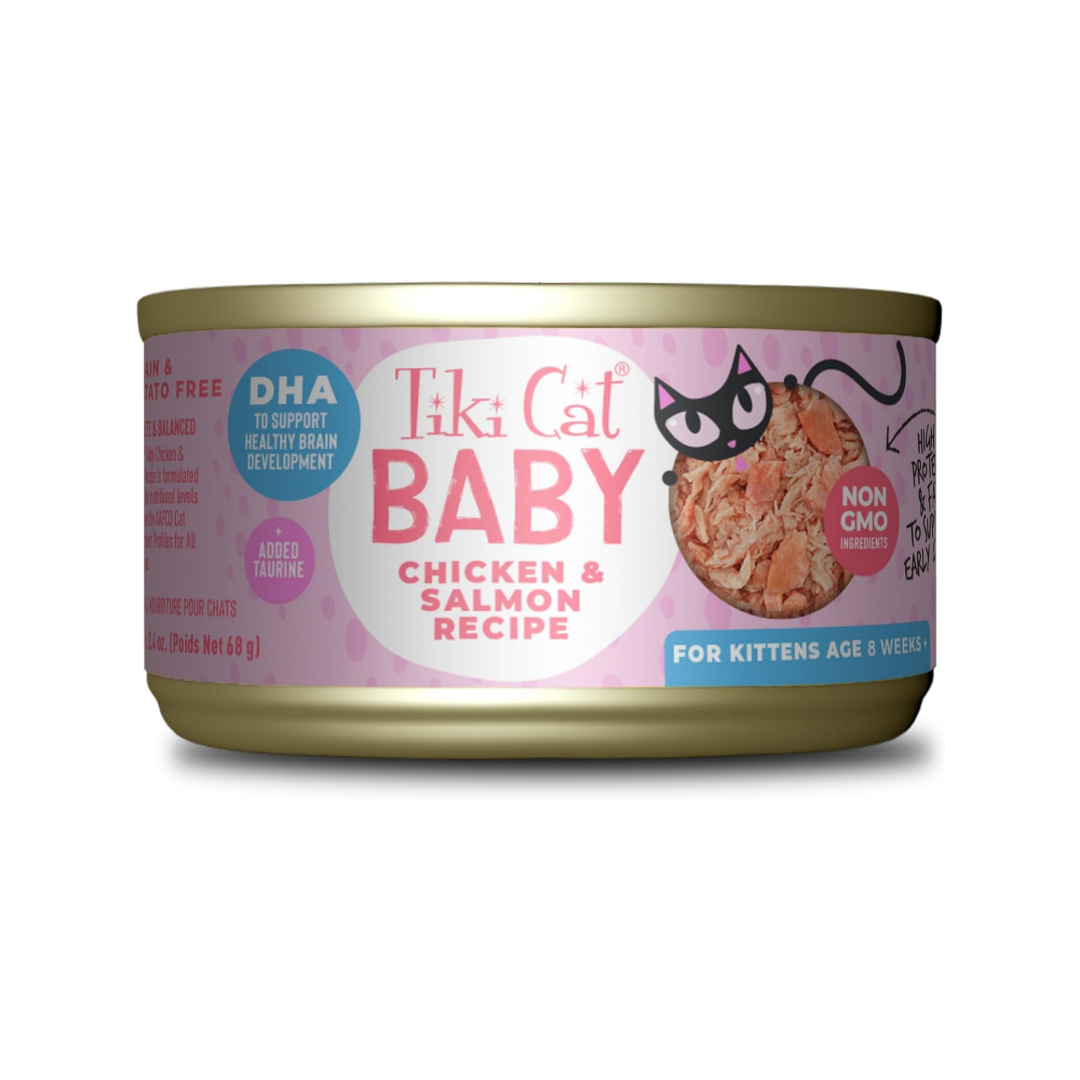
The best wet kitten food
Nutritionally complete and high in protein, this chicken and salmon-flavored food is an excellent choice for growing kittens. The recipe includes DHA to support brain development and prebiotics for digestive health.
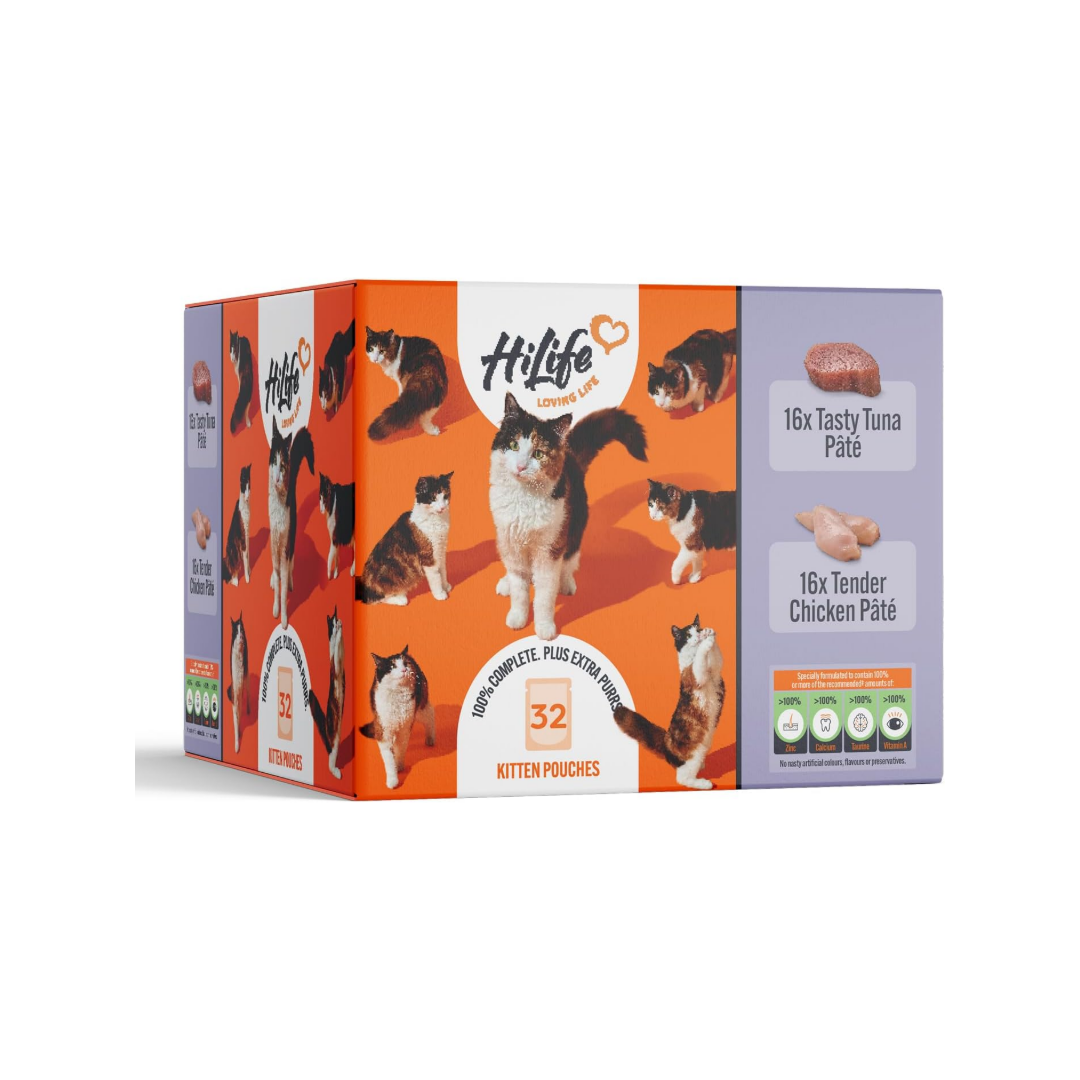
The best budget-friendly wet kitten food
This affordable kitten food is made with 50% meat, providing your fur baby with an excellent source of protein to support muscle growth. It also meets their total intake requirements for zinc, calcium, taurine, and vitamin A.
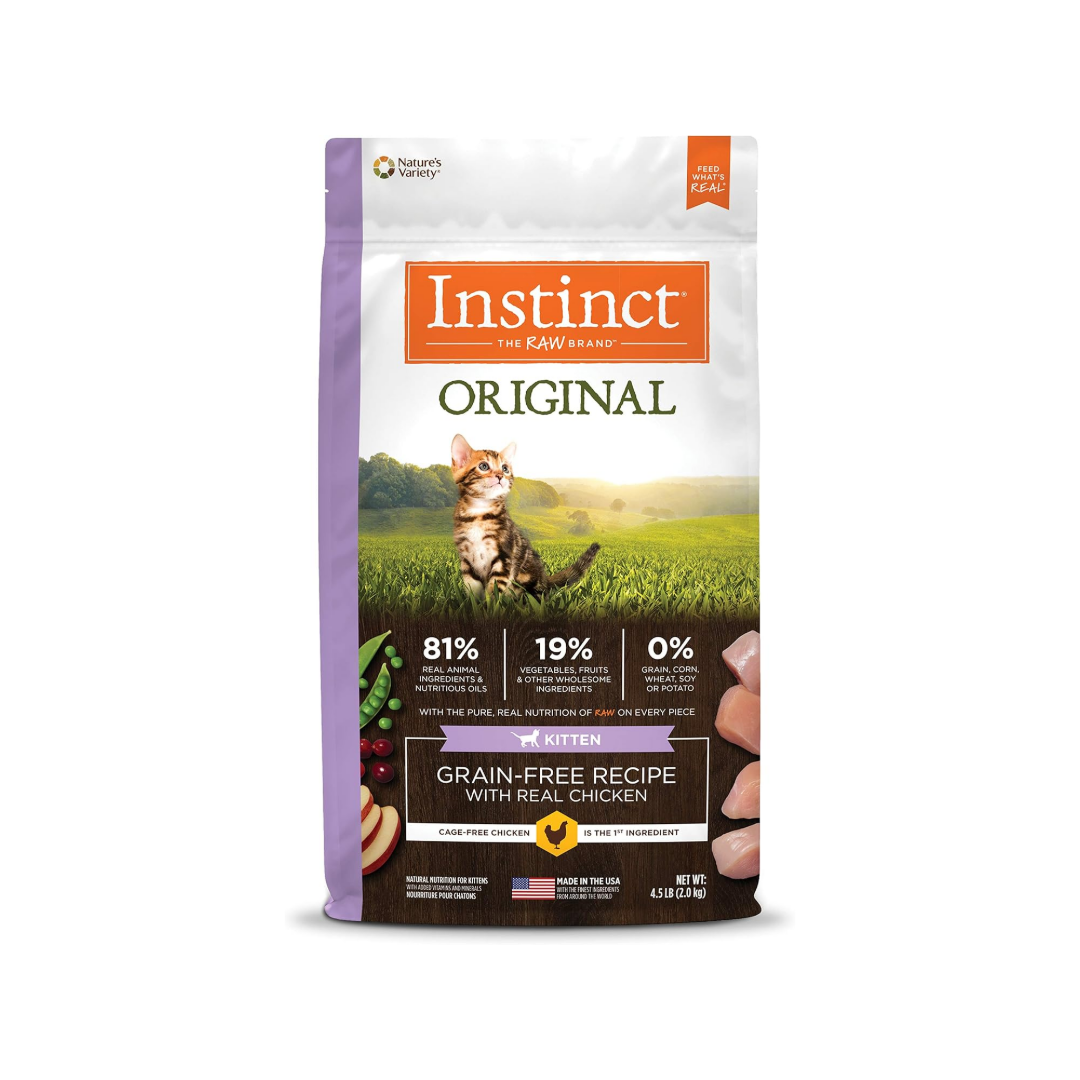
The best raw kitten food
With cage-free meat as the first ingredient and no by-product meals, artificial preservatives, or colors, you can feel confident feeding this to your hungry kitten. The recipe is also packed with protein from raw, freeze-dried chicken.
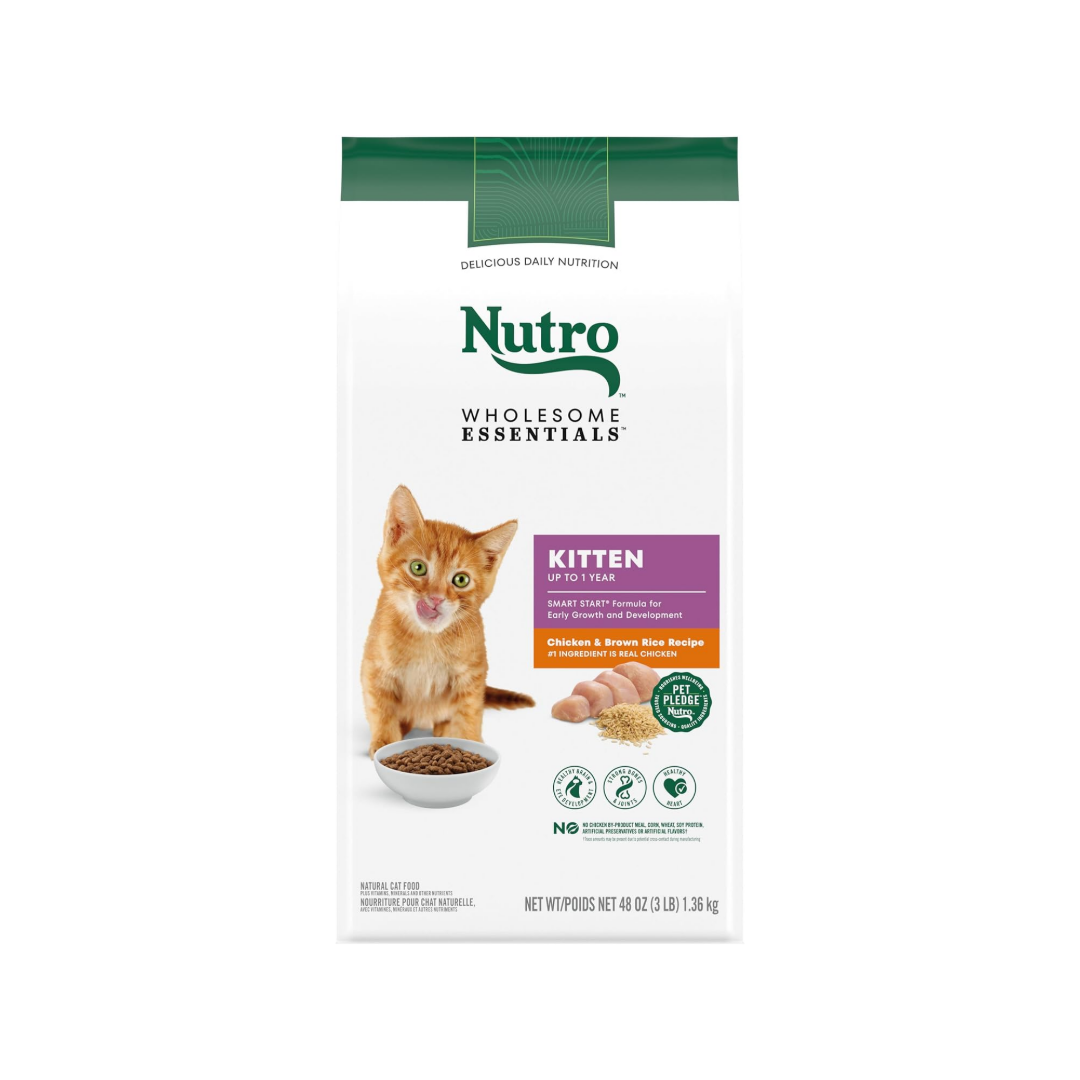
The best budget-friendly dry kitten food
Made with antioxidants, omega-3s, and vitamins, this food is both nutritious and complete, making it a strong contender for your furry friend. It's also high in protein, with chicken as the primary ingredient, as well as calcium to support joint and bone health.
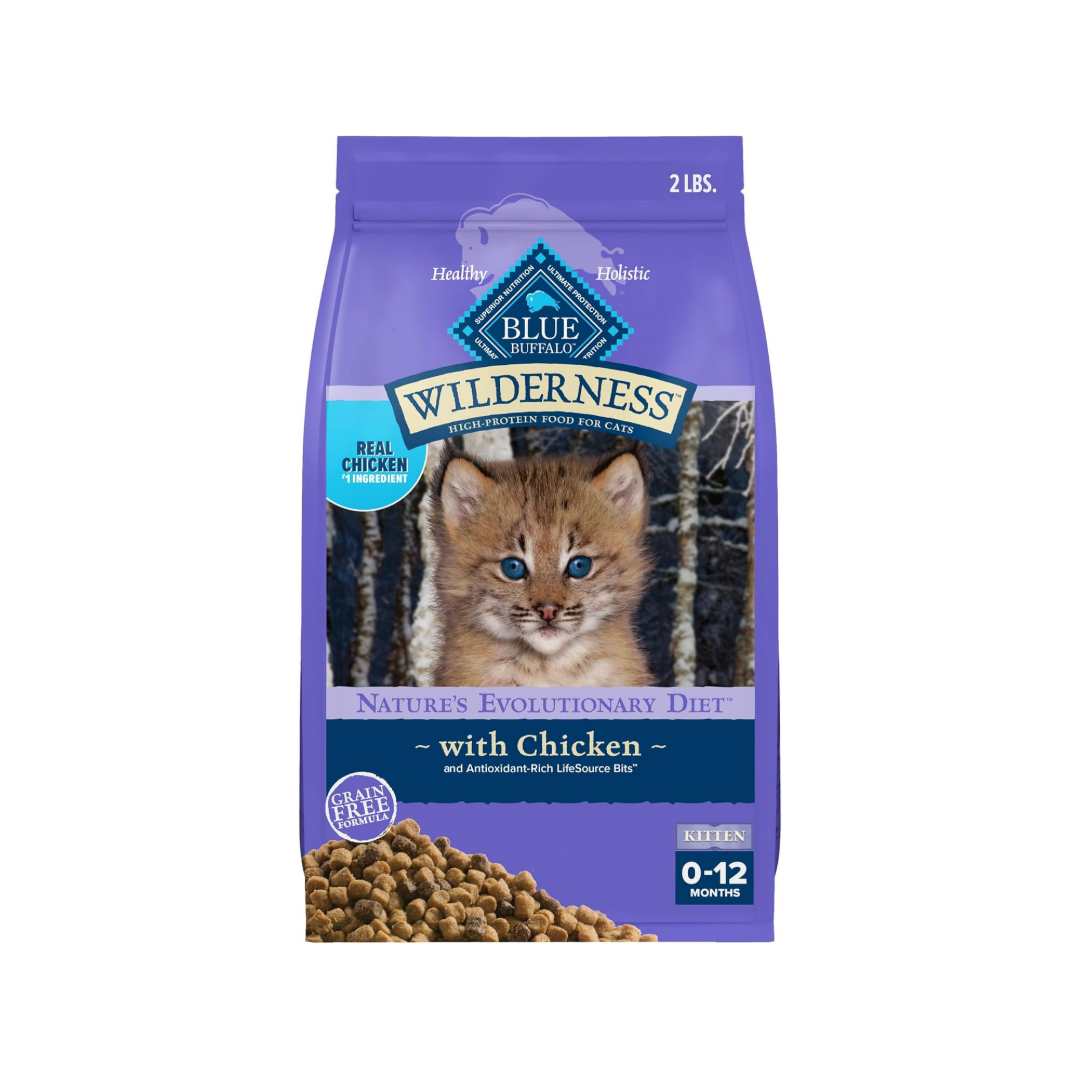
The best premium dry kitten food
This recipe is rich in protein, with chicken as the first ingredient, along with chicken meal, fish meal, and egg. It also includes DHA and EPA to support brain and eye health, as well as antioxidants for immune system support.
The best kitten food we recommend
Why you can trust PetsRadar
The best dry kitten food

1. Blue Buffalo Baby Blue Natural Kitten Dry Cat Food
Specifications
Reasons to buy
Reasons to avoid
This kitten food might be one of the most expensive options in this guide, but after taking a look at the high-quality ingredients list, it’s easy to understand why.
With deboned chicken as the number one ingredient (along with fish meal and egg), it’s high in protein to support your cat’s growth and muscle development. The recipe also contains sources of omega-3 fatty acids, DHA, and ARA, which are beneficial for a long list of reasons, including brain, heart, eye, skin, coat, and joint health.
To help support your kitten’s immune system, you’ll also find antioxidants from cranberries (a source of vitamins C, E, and K, as well as manganese) and carrots (providing beta-carotene, fiber, vitamin K1, and potassium).
The recipe is free from poultry by-product meals, corn, wheat, soy, artificial flavors and preservatives, but it does contain grain, which might not be suitable for all kitties. Grain intolerances aren’t very common in cats, but if this applies to your furry friend, the Blue Buffalo Wilderness Kitten Recipe is an excellent alternative.
Dr. Godfrey says: "Blue Buffalo Baby BLUE contains a high level of protein, which is perfect for growing kittens, as well as additional essential fatty acids, for healthy skin, good immunity, and to support growth and development."
This product is currently being tested; we'll be adding our full verdict soon.
The best wet kitten food

2. Tiki Cat Baby in Chicken & Salmon
Specifications
Reasons to buy
Reasons to avoid
Most kittens prefer wet food, and this offering by Tiki Cat comes in four different flavors, so you're sure to find something that suits their taste! The chicken and salmon option contains 15% protein, providing your feline with everything they need to build strong and healthy muscles.
The nutritionally complete recipe has the correct levels of calories and fats, ensuring your cat has enough energy during this period of rapid development. It also contains DHA, an omega-3 fatty acid that helps support everything from the brain and heart to eye and immune health, as well as maintaining a healthy, shiny coat.
In comparison to the HiLife wet food in this guide, it's a little more expensive, working out at 20 cents/pence more per ounce. However, since it contains 4.5% more protein and has packaging that's easier to recycle, we think it's worth the extra spend.
Dr. Godfrey says: "Tiki Cat Baby in Chicken and Salmon is a nutritionally complete wet kitten food, so it doesn’t need to be fed alongside anything and many kittens find wet food easier to eat and more palatable."
The best budget-friendly wet kitten food

3. HiLife It's Only Natural Tender Wet Kitten Cat Food Chicken Pate
Specifications
Reasons to buy
Reasons to avoid
This affordable kitten food is an excellent choice for those who don't want to break the bank, costing £1.60 per day for cats aged one to three, £2 for those aged three to eight, and £2.70 for nine to 12. Not only is this food budget-friendly, but it also meets your kitten's nutritional needs for zinc (for skin and coat health), calcium (for joints and bones), taurine (to support overall health), and vitamin A (for vision).
For such an affordable price, you might expect to find cheap fillers and by-product meals, but that's not the case with HiLife Pate. Instead, chicken is the first ingredient and makes up half of the ingredients list, which from my experience, makes it stand out from other options on the market.
Since the food is nutritionally complete with high moisture content, you don't need to feed your cat anything else alongside it.
Dr. Godrey says: "HiLife It’s Only Natural kitten food states that it is nutritionally complete and balanced and contains a kitten’s total intake requirements of zinc, calcium, taurine, and vitamin A. It also contains 50% chicken, however, there isn’t much information available on the breakdown of nutrients."
The best raw kitten food

4. Nature’s Variety Instinct Original Kitten Food
Specifications
Reasons to buy
Reasons to avoid
It’s sometimes difficult to know what’s actually inside the foods we feed our four-legged friends. So, foods that make it easy for us are always welcome, which is where Nature’s Variety steps up to the plate. The brand's commitment to raw ingredients makes their Instinct Original Kitten dry kibble super easy to understand.
Their Instinct range is committed to 100% natural ingredients, and this recipe contains no soy, grain, wheat, corn, potato, by-product meals, artificial preservatives, or colors.
That said, 81% of this kibble comes from real animal ingredients and oils, which puts its protein content at a whopping 42.5% and fat at 22%. That’s exactly what a calorie-hungry kitten needs. The food includes taurine, DHA, and probiotics for promoting everything from healthy brain and vision development to nice soft fur.
The remaining 19% of the product is made up of vegetables, fruits, and what Instinct calls ‘other wholesome ingredients', and while some have criticized the product for including ingredients like carrots, deeming them unnecessary, the kibble's nutritional profile is very strong.
Given this food’s raw and natural ideology, we think we’d be remiss in not mentioning that Instinct has had to issue recalls on their food twice for potential salmonella. The last of these came in 2015 after a confirmed FDA test, though we have no reason to believe this is likely to happen again.
As with most dry cat foods, Instinct Original Kitten isn’t going to give your kitten all the water it needs, so you may want to think about pairing this with one of the best wet kitten foods rather than as your kitten’s sole diet.
Dr. Hasler says: "This diet contains cage-free chicken as its first ingredient, and it is complete and balanced, according to the Association of American Feed Control Officials (AAFCO) guidelines for kitten food. Before making the decision to feed your kitten raw, it is important to note that raw diets can harbor bacteria such as Salmonella, E. coli, and Campylobacter, which can cause gut infections in your kitten and any humans who touch them, handle their food, or clean their litter box."
The best budget-friendly dry kitten food

5. Nutro Wholesome Essentials Kitten Dry Cat Food
Specifications
Reasons to buy
Reasons to avoid
If you're looking for a clean and natural formula that uses high-quality ingredients, then this real food kibble from Nutro is well worth parting some dollars for. While it's a bit more expensive than many other brands, this is definitely a case of 'you get what you pay for'.
With real chicken as the number one ingredient, and nourishing brown rice as a filling carbohydrate, this kibble has everything your new kitten needs to thrive. Compared to other dry options in this guide, it has the highest moisture level at 10%.
You'll find an extensive list of included vitamins, minerals, and antioxidants, plus plenty of omega-3 fatty acids for growth and development and calcium for strong bones and joints. We love the addition of beet pulp too, which provides a good hit of fiber and will help keep your kitten's digestive system running smoothly.
The limited ingredient list means there's little chance of this kibble causing any kind of allergic reaction in your kitten. It's free from corn, wheat, and soy, as well as all artificial colors, flavors, and preservatives, which is really great to see.
Overall, this is a complete, nutritious, and balanced formula that's getting rave reviews from both pet parents and their young feline furkids. If your budget can stretch to the extra cost, we think this one is definitely a worthy contender for a place in your shopping cart.
Dr. Hasler says: "This kitten food contains real chicken as its first ingredient, and it does not have any unwanted chicken by-products. It also provides omega-3 fatty acids and antioxidants to support your kitten’s growth, development, and immune system. It is formulated with calcium to support growing kittens’ bones and joints."
The best premium dry kitten food

6. Blue Buffalo Wilderness Kitten Recipe
Specifications
Reasons to buy
Reasons to avoid
Blue Wilderness claims to provide kittens with the finest of food, using real chicken as its first ingredient and promising not to use any poultry by-products. This dry food is also free from soy, wheat, and corn and there are no artificial flavors or preservatives. It's as healthy a food as they come, making use of a host of natural ingredients.
The food also contains fish oil which is rich in omega-3 fatty acids and DHA, so your kitten will not only retain a healthy coat but benefit from improved cognitive function too. Vitamins A and C, along with potassium and fiber, are provided by the inclusion of blueberries. Potatoes boost vitamin C and potassium levels while also providing vitamin B, iron, and magnesium.
Pumpkin is added because it's rich in beta-carotene, vitamin A, and zinc, while spinach is thrown into the mix along with apples for carotenoids, quercetin, and dietary fiber. What's more, the blend of antioxidants, vitamins, and minerals are not exposed to huge amounts of heat, which means most of the fresh nutrients are retained.
Dr. Hasler says: "This diet has a high protein content compared to many other kitten foods, with a minimum crude protein level of 40%. It contains real chicken as its first ingredient, without the addition of unwanted poultry by-products. It is also rich in antioxidants to support your kitten’s immune system as they grow."
This product is currently being tested; we'll be adding our full verdict soon.
How we tested the best kitten foods
Before adding any products to this guide, we researched hundreds of contenders and ensured they ticked the following boxes:
Vet-approved formula: We ran every single option past our team of trusty in-house vets, and filtered out a lot of recipes that didn't meet their recommendations. All of these foods contain the correct balance of proteins, calories, and fats for kittens, and have a protein source as the first ingredient.
Healthy and nutritional ingredients: There are so many products on the market that contain unnecessary ingredients that aren't beneficial to your cat's health, which is something that really bugs me! That's why I researched each ingredient to ensure the recipes are safe and nutritious to include in your kitten's diet.
Once we had narrowed the list down to just six products, we asked our testers the following questions:
- Did your kitten seem to like the taste of the food?
- Has the food been digestible for your kitten?
- Is the food good value for money?
- Is the packaging easy to store and recycle?
- Is the food an appropriate size for a kitten?
- Is the texture appropriate for a kitten?
If you want to learn more about our procedure, we have a dedicated page on how we test.
How to choose the best kitten food
When it comes to choosing the best kitten food, Dr. Hasler says there a few things you need to consider.
Firstly, nutrition. You want to make sure you’re hitting the right protein-to-fat ratio, and getting enough of both. For dry food, you want to be hitting more than 30% in protein content and 15-20% in fat. For wet foods, you ideally want between 10-15% for protein and around 3-6% for fat. To save you the job of scanning through a long list of ingredients, we ensured that every product in this guide meets these requirements.
You may want to be more aware of foods with high grain content. While the debate rages about exactly how bad grains are for cats, they can be an indicator that a food is full of filler or high in difficult-to-digest carbohydrates, rather than all the more preferable ingredients for a kitten's development.
When it comes to intolerances and allergies, it’s actually fish, chicken bee,f and dairy products that are the most common in felines. So, while you should expect to see a little bit of a digestive reaction to any new food, if it goes on too long you may want to investigate further.
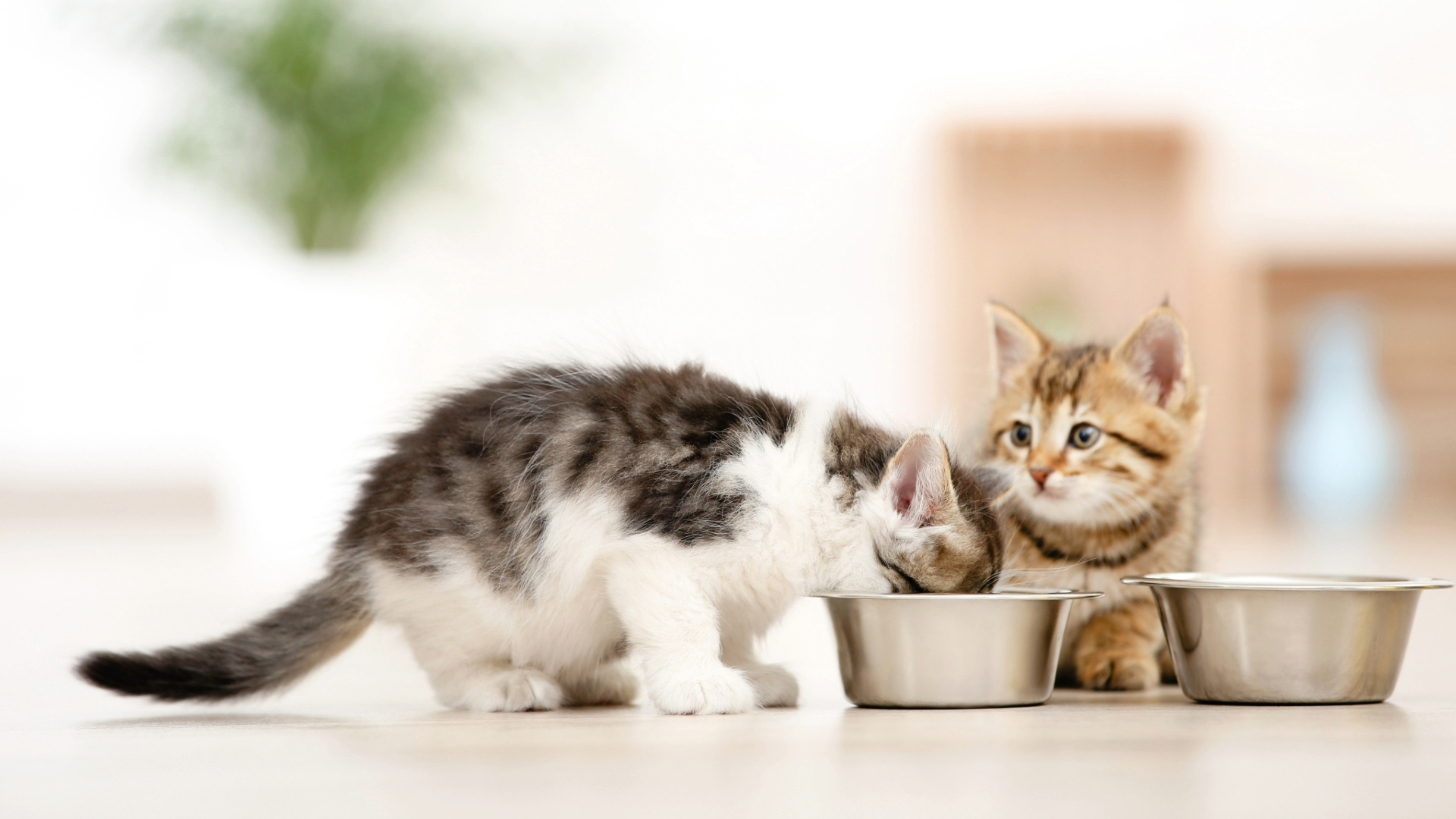
Ideally, you’ll pick out a mix of dry and wet foods. While dry food can be more cost-effective and easier to manage, it won’t provide the moisture your cat needs to stay hydrated. If you’re going dry only, make sure your house is full of water sources for your cat to find, though they’ll need to be refreshed daily. You might even want to invest in the best pet water fountain to encourage your kitty to drink more.
Lastly, the best kitten foods will recommend a transition period when changing cat food. This will avoid most cases of digestive distress which, if prolonged, can be dangerous to kittens. Take a week, and slowly introduce the new food alongside the old to allow their systems to get used to it. Of course, if your kitten seems to be experiencing problems, or you’re worried that they may have a food sensitivity or other health problem, consult your vet.
Dr. Woodnutt emphasizes that it’s really important that your kitten food is complete and balanced for growth—it should say so on the pack.
She says: “While lots of brands will conform to the AAFCO/FEDIAF guidelines to enable them to call themselves ‘complete and balanced’, it’s worth looking for a large, reputable brand. Smaller, ‘boutique’ brands may not have access to the nutritionists, testing facilities, and buying power of the larger brands, making imbalances and nutrient deficiencies more likely.”
What nutrients are important for kittens?
According to Woodnutt, feeding a complete diet that has been balanced for growth is essential for kittens. While they need all the same nutrients as an older cat, they need them in different proportions. So, if you're struggling to decide between kitten food vs cat food, you know what to do now!
“They need high protein and calories in order to get enough nutrients to grow, as their little stomachs can’t take large volumes of food. They also need the proper calcium-to-phosphorus ratio for healthy bone growth”, Woodnutt explains, “As with all cats, bioavailable taurine is also essential, as, without it, kittens can quickly get heart failure.”
Can kittens eat dry or wet food?
Both wet food and dry food are safe to feed to kittens, according to Dr. Woodnutt, and it's a good idea to get them used to both from a young age. However, if your kitten is very young and just weaning, she says that they will probably favor wet food, with pates being the easiest to eat.
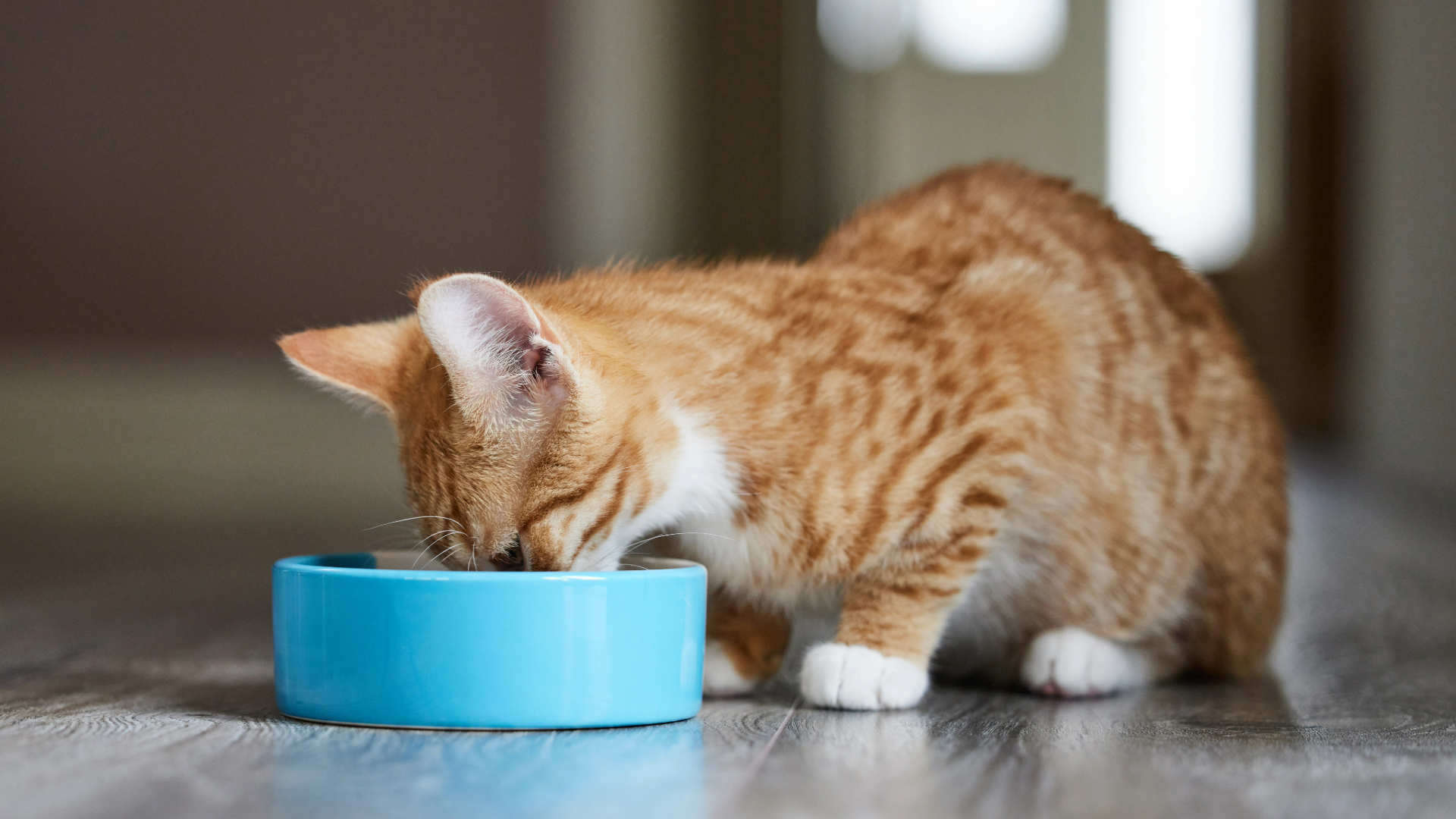
How many times a day should a kitten eat?
How often should I feed my kitten? This is a common question that lots of new pet parents ask, but the answer all depends on their age.
Dr. Rebecca MacMillan says: "Very young kittens less than twelve weeks of age will need feeding four or five times a day. Kittens that are three to six months of age should have three or four meals a day. At six months and older a cat can have two to three meals per day.
"Just ensure you check how much to feed your kitten per 24 hours and divide this amount equally into the recommended number of meals. You should then spread these meals evenly throughout the day."
Should I leave food down for my kitten all day?
If your kitten enjoys grazing throughout the day, free-feeding is fine in some cases, but there are some considerations you should make beforehand. Dr. MacMillan warns that you should only leave down their daily allowance, and avoid topping up the bowl as they chomp their way through it. If you decide to schedule their meals, the best automatic pet feeders make the job a lot easier.
She adds: "Most kittens have a very keen appetite, so allowing them to graze doesn’t always work that well. In my experience, it is usually best to feed them several smaller meals at regular intervals to avoid them trying to gulp down their daily ration in one go."
Want more feeding advice? Read our recommendations for the best cat puzzle feeders and best anti-vomit cat bowls which can help with your kitty's digestion. Or, find out whether kittens can eat watermelon.
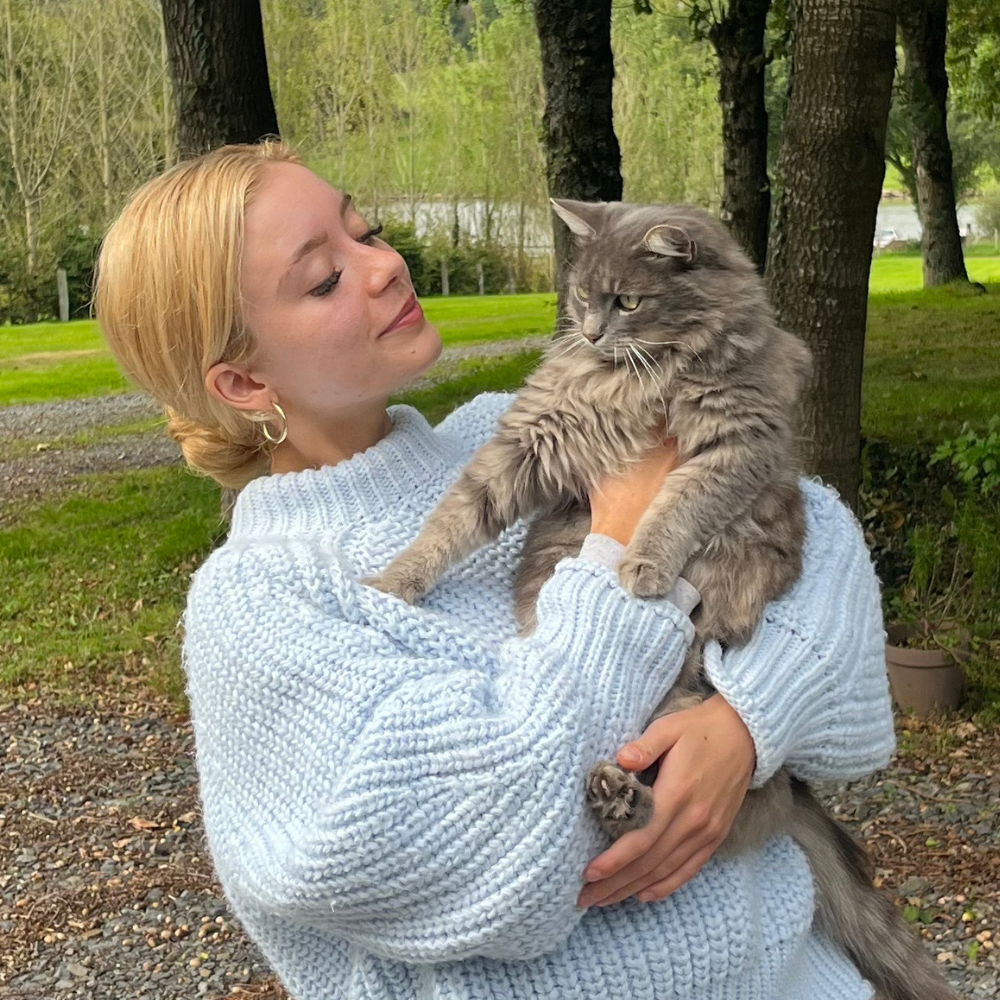
Megan Milstead is Staff Writer on PetsRadar, where she writes buying guides, review and features, helping readers to make informed decisions for their pets' health and happiness. She is a life-long animal lover and has looked after cats, dogs, hamsters, guinea pigs, horses, and more throughout her life. She is currently a cat mom to two tabbies, named Chilli and Nala, and is passionate about making healthy choices for them—including giving them the right nutrition.

Dr. Diana Hasler graduated with distinction from the University of Edinburgh Royal (Dick) School of Veterinary Studies in 2018. She has experience working as a small animal veterinarian in general practice, where she has treated many dogs, cats, rabbits, and rodents.

Dr. Joanna Woodnutt qualified as a veterinarian from the University of Nottingham where she then went on to practice companion animal medicine in the Midlands. She really took to the consulting side of things and helping clients with medical problems such as dermatology, behaviour and nutrition - anything that involved helping clients understand their pets better.

Hannah graduated from the Royal Veterinary College in 2011 and began work straight away at a busy mixed practice. Initially, she treated all species, but focused on small animals from 2014. She has a passion for soft tissue surgery, ultrasound, and canine and feline dentistry, having completed additional training in these areas.

Rebecca is a veterinary surgeon who graduated in 2009 from the Royal Veterinary College in London. She has a wealth of experience in first opinion small animal practice, having done a mixture of day-to-day routine work, on-call emergency duties and managerial roles over the years. She enjoys medicine in particular and she is proud to have recently achieved a BSAVA postgraduate certificate in small animal medicine (with commendation). She writes on various feline and canine topics, including behavior, nutrition, and health. Outside of work and writing she enjoys walking her own dog, spending time with her young family and baking!
Get the best advice, tips and top tech for your beloved Pets

Megan is a Staff Writer at PetsRadar, covering features, reviews, deals, and buying guides. She has a wealth of experience caring for animals, having grown up with dogs, cats, horses, guinea pigs, and more throughout her life. She studied BA Journalism at the University of Westminster, where she specialized in lifestyle journalism and was editor of Smoke Radio’s lifestyle website. Megan works alongside qualified vets and accredited trainers to ensure you get the best advice possible. She is passionate about finding accurate and helpful answers to your pet-related questions.
